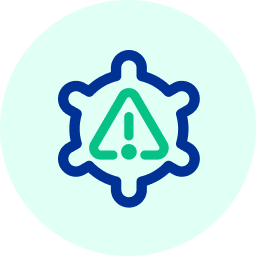Why Life Sciences Companies Need Continuous Validation to Embrace the Cloud
To remain competitive in today’s climate, life sciences companies need to be able to continuously research and develop new, differentiated features and products. That’s why they’re increasingly moving their IT infrastructure from on-prem data centers to the cloud.
However, moving to the cloud requires meeting GxP regulatory requirements within the cloud environment. Because underlying cloud infrastructure and cloud applications are always evolving, they need to be continuously validated to ensure compliance.
A true cloud constantly releases changes, so the end user can leverage new innovations to increase productivity. For companies using a traditional validation process to review each change and then address it, this creates an impossible backlog of changes to examine.
When working with a manual validation toolset, most life sciences companies simply don’t have the ability to keep their cloud instance in a validated state. Their IT departments are stretched thin just managing apps, much less making sure they’re constantly re-validated as new patches, upgrades, and features are released.
To effectively embrace the cloud and remain competitive, life science companies need to transform the way they approach validation.
Continuous Validation for Life Sciences Companies
Continuous validation is defined as providing documented evidence to certify that an app not only met pre-established acceptance criteria but continues to meet such criteria, thus mitigating the risk of unknown changes.
It’s important to understand that continuous validation is not just “point in time” validation or evidence that an app worked well at a discrete point in time. Continuous validation ensures that the app continues to function as expected, mitigating the risk of change due to patches, upgrades, and new releases that could potentially alter its behavior.
For life sciences companies, the automated nature of continuous validation can be a transformative competitive advantage.
Replacing conventional, paper-heavy manual validation with a sophisticated, software-based solution can compress validation timelines by more than 75%, cut costs by 50%, and reduce in-house validation efforts by more than 90%.
Continuous validation reduces compliance and business risks by ensuring cloud-based applications meet and continue to meet GxP requirements, even as the apps and their underlying infrastructure are constantly changing.
It also empowers companies to immediately use the innovative features cloud providers offer, instead of putting off upgrades for months or years, a common downfall of using on-premises infrastructures and applications.
So why aren’t all life sciences companies using continuous validation to bring their business to the cloud and manage associated GxP regulations?
Roadblocks to Continuous Validation Adoption
Life sciences companies have been slow to adopt continuous validation for several reasons:
- Lack of knowledge: Transforming manual validation into automated continuous validation requires a depth of technical expertise that most IT departments at life sciences companies may not possess.
- Stringent regulations: Life sciences companies operate within an intense, ever-evolving regulatory framework, which makes adopting new processes a considerable but not insurmountable challenge.
- Resistance to change: Despite the benefits a continuous validation framework sets in motion, some life sciences companies are skeptical about introducing a new, unfamiliar process.
For life sciences companies to survive in a world that’s becoming increasingly cloud based, adopting continuous validation is inevitable. The question isn’t if, but when, and those that move faster will have a significant competitive advantage over those that hesitate.
xLM Continuous Validation for Life Sciences
xLM eliminates the burdens associated with maintaining GxP compliance for cloud applications with a “lights out” continuous validation framework that requires no resources or intervention on your behalf.
Our continuous validation testing is executed within a robust Quality Management System (QMS) based on industry standards, as well as applicable GxPs, to empower life sciences companies to move their workloads to the cloud without the risk of violating compliance regulations.

COMMENTS